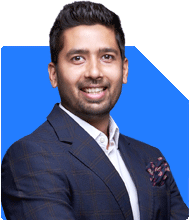Kirtan A Shah | Answer |Ask -Follow
MF Expert, Financial Planner - Answered on Jul 26, 2023
He is also a Certified International Wealth Manager and Financial Engineering and Risk Manager.
Shah is the co-author of Financial Service Management and Financial Market Operations, which are used as reference books for Mumbai University.
He is frequently seen on CNBC, Zee Business, ET NOW & BQ Prime as an expert guest.... more

Hello Sir, I have invested 9lacs via 5k monthly SIP each in 3 MF, i.e., Franklin India Smaller companies, SBI magnum midcap and ABSL Pure value. Stopped these SIP in May 22, however planned for accumulated corpus of 9L to remain invested for next 18years in these funds. Secondly, I started 10K monthly sip in 3MF since Sept 2021, i.e., SBI Focused Equity, Kotak Small cap and UTI Flexi cap. I have planned to invest in these funds for next 18years. (Till 2040) Further, I want to start another monthly SIP for 30K for next 18years. Target is to have retirement corpus close to 9Cr., by 2040. I am unable to decide between NIFTY 50 index fund or small cap fund. Request you to suggest. Thanks.
- ABSL Pure Value
- Franklin India Smaller Companies
- UTI Flexi
(2) If you follow point one, you will have 1 focused, 1 mid & 1 small cap in your portfolio
(3) Split the 30K equally in the remaining 3 funds
You may like to see similar questions and answers below
Omkeshwar Singh | Answer |Ask -Follow
Head, Rank MF - Answered on Jan 06, 2021
Vivek Lala |323 Answers |Ask -Follow
Tax, MF Expert - Answered on Jul 03, 2023
Ramalingam Kalirajan |10881 Answers |Ask -Follow
Mutual Funds, Financial Planning Expert - Answered on May 15, 2024
Ramalingam Kalirajan |10881 Answers |Ask -Follow
Mutual Funds, Financial Planning Expert - Answered on May 14, 2024
Ramalingam Kalirajan |10881 Answers |Ask -Follow
Mutual Funds, Financial Planning Expert - Answered on Aug 16, 2024
Dr Dipankar Dutta |1839 Answers |Ask -Follow
Tech Careers and Skill Development Expert - Answered on Dec 13, 2025
Dr Dipankar Dutta |1839 Answers |Ask -Follow
Tech Careers and Skill Development Expert - Answered on Dec 13, 2025
Mayank Chandel |2575 Answers |Ask -Follow
IIT-JEE, NEET-UG, SAT, CLAT, CA, CS Exam Expert - Answered on Dec 13, 2025
Radheshyam Zanwar |6742 Answers |Ask -Follow
MHT-CET, IIT-JEE, NEET-UG Expert - Answered on Dec 13, 2025
Mayank Chandel |2575 Answers |Ask -Follow
IIT-JEE, NEET-UG, SAT, CLAT, CA, CS Exam Expert - Answered on Dec 13, 2025
Mayank Chandel |2575 Answers |Ask -Follow
IIT-JEE, NEET-UG, SAT, CLAT, CA, CS Exam Expert - Answered on Dec 13, 2025
Kanchan Rai |646 Answers |Ask -Follow
Relationships Expert, Mind Coach - Answered on Dec 12, 2025
Ravi Mittal |677 Answers |Ask -Follow
Dating, Relationships Expert - Answered on Dec 12, 2025
Ramalingam Kalirajan |10881 Answers |Ask -Follow
Mutual Funds, Financial Planning Expert - Answered on Dec 12, 2025
Ramalingam Kalirajan |10881 Answers |Ask -Follow
Mutual Funds, Financial Planning Expert - Answered on Dec 12, 2025





























